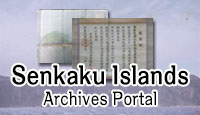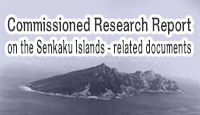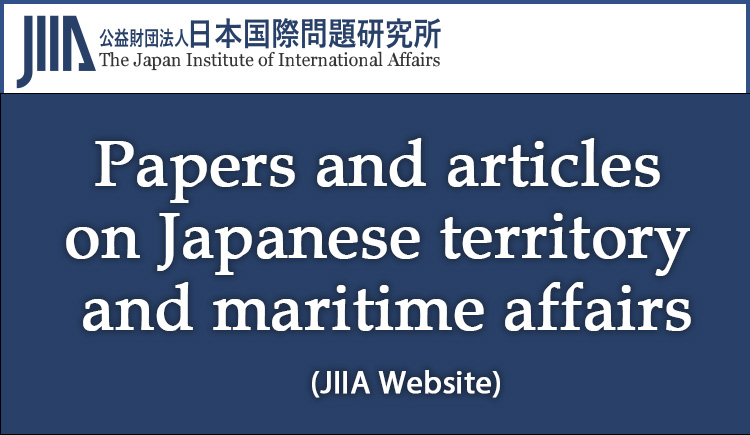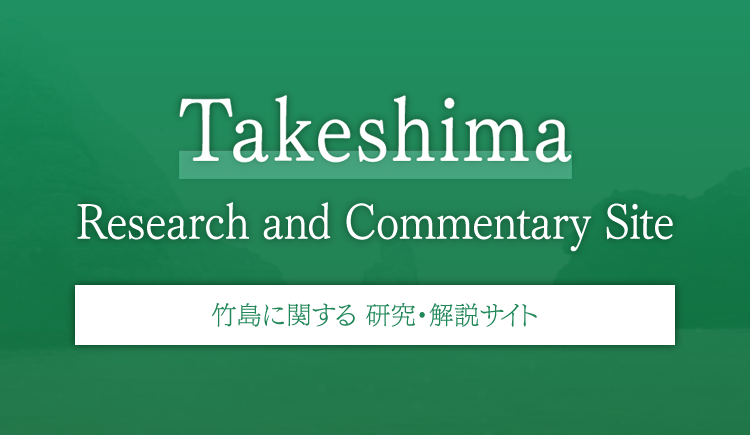The documents and materials published on this website were collected, researched, and prepared with advice from experts, as a part of a Government-commissioned project. The contents of this website do not reflect the views of the Government. Links to external sites (domains other than https://www.cas.go.jp) are not under the management of this site. For linked websites, please check with the organization/group that manages the website for the link in question.
Commentary on themes by historical period
Classification by historical periods III
From the Cabinet decision to incorporate the Senkaku Islands into Japanese territory until the end of World War II (1895-1945)
(2) Valid control of the Senkaku Islands From 1895 onward
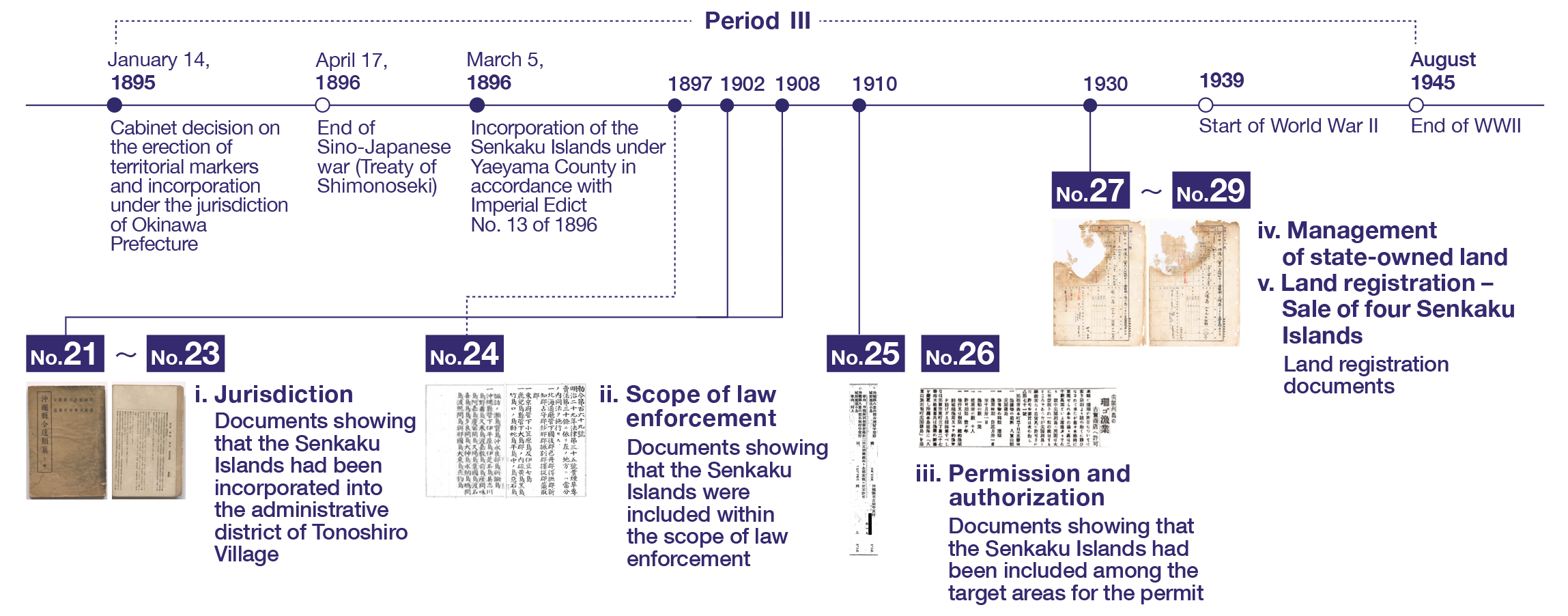
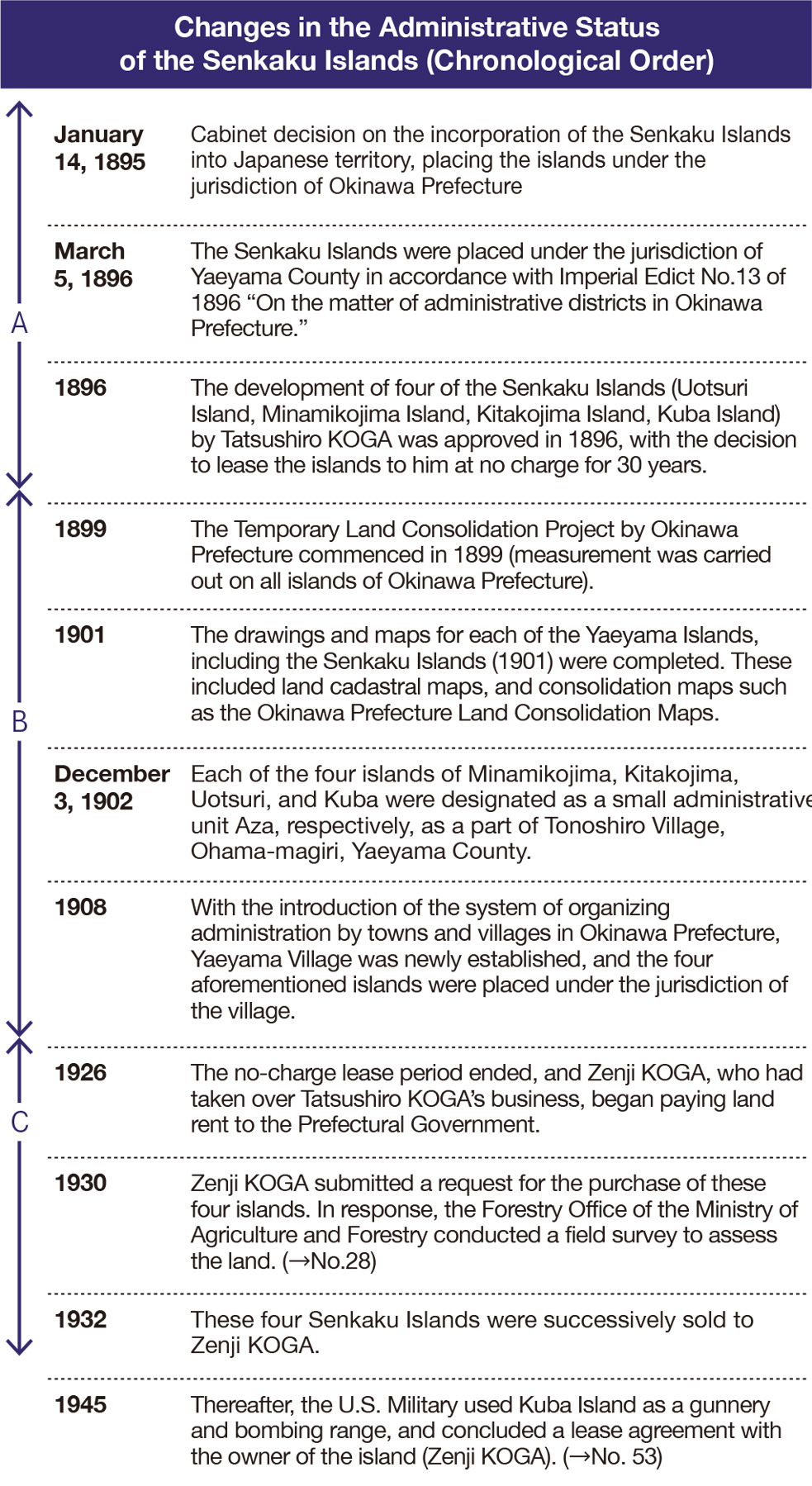
i. Jurisdiction – Incorporation of the Senkaku Islands into administrative districts
After their incorporation into Okinawa Prefecture, the islands were placed under the jurisdiction of Yaeyama County (as shown *A in the table)
The Senkaku Islands, which were placed under the jurisdiction of Okinawa Prefecture by a Cabinet decision in 1895, were included in Yaeyama County in 1896, the year after their incorporation, by the promulgation of Imperial Edict No.13 “On the matter of administrative districts in Okinawa Prefecture”.
After that, the Annual Report of the Statistics of Okinawa Prefecture (1895-96), which summarizes the land conditions of Okinawa Prefecture, stated that Uotsuri Island and Kuba Island belonged to Ishigaki Island, Yaeyama County, and listed their circumferences and maritime distancesNo.21.
In 1896, Okinawa Prefecture authorized Tatsushiro KOGA, a seafood merchant, to develop the Senkaku Islands, and the Prefectural Government decided to lease him four of the Senkaku islands free of charge for 30 years.
The Islands were incorporated into Tonoshiro Villege and each island was designated as an administrative unit called Aza and, then, the Islands became a part of Yaeyama Village (as shown *B in the table)
In 1899, the Okinawa Prefecture Temporary Land Consolidation Project commenced, and surveying projects were carried out on all islands of Okinawa Prefecture. In 1901, the maps of each island of Yaeyama County, including the Senkaku Islands, were drawn up and published as land consolidation maps.
In 1902, the administrative districts of Miyako and Yaeyama Islands were reorganized based on the surveying results. Okinawa Prefectural Ordinance No. 49No.22 gave notification that the Senkaku Islands would be incorporated into Tonoshiro Village and each of the four Islands of Minamikojima, Kitakojima, Uotsuri, and Kuba would be designated as an administrative unit of Aza, respectively. In the Annual Report of the Statistics of Okinawa Prefecture (FY1902), the four islands of Minamikojima, Kitakojima, Uotsuri, and Kuba were entered as “Land Category: Wild Land” and “Belonging to: Tonoshiro Village, Ohama-magiri, Yaeyama County, Okinawa Prefecture.” At this time, there existed an administrative unit known as “magiri,” and the Senkaku Islands belonged to Tonoshiro Village in Ohama-magiri.
The Temporary Land Consolidation Project ended in 1903, and a complete and updated map of all the areas under the jurisdiction of Okinawa Prefecture, reflecting the results of this project, was published in 1906.
In 1907, the “Tosho Choson-sei” (system of organizing the administration of islands by towns and villages) was enforced in Okinawa Prefecture and the “magiri” unit of administration was abolished. In 1908, four of the Senkaku Islands, Minamikojima, Kitakojima, Uotsuri, and Kuba, (*1) came to belong to Yaeyama Village of Yaeyama CountyNo.23.
After that, the affiliation of the Senkaku Islands changed to Ishigaki Village, Ishigaki Town, and Ishigaki City successively, but their administrative status as part of the Yaeyama Islands remained unchanged, and they continued to be managed as such.
*1 Of the Senkaku Islands, Taisho Island was incorporated into Ishigaki Village of Yaeyama County in 1920.
ii. Scope of application of laws
As confirmed by our research, it was explicitly stipulated that the Salt Monopoly Law, Tobacco Business Monopoly Law, and Leaf Tobacco Monopoly Law were not applicable to Uotsuri Island after the incorporation of the Senkaku Islands on the premise that Japan had legislative jurisdiction over the Islands. This report includes an Imperial Edict that provided for the scope of application of the Leaf Tobacco Monopoly LawNo.24.
iii. Permission and licensing
The Government gave permission and issued licenses for prospecting for phosphate resources on the Senkaku Islands. Our research confirmed that an Official Gazette in 1922 included information on an application by an individual in Miyako County of Okinawa Prefecture for prospecting for phosphate on Kitakojima and Minamikojima Islands, which was not approvedNo.25.
In addition, a newspaper article (dated July 3, 1935) reported on the application submitted by Zenji KOGA, who had taken over Tatsushiro KOGA’s business, to Okinawa Prefecture for designating the Senkaku Islands of Yaeyama County as fishing grounds for a coral fishery, which was approved by the PrefectureNo.26.
iv. Disposal and management of state-owned land
After 30 years of free loan, the four islands of Senkaku were sold to Zenji KOGA (as shown *C in the table)
After the death of Tatsushiro KOGA in 1918, Zenji KOGA (the eldest son of Tatsushiro), who had taken over the business, continued using these islands while paying land rent after the free lease period ended in 1926. In 1930, he submitted a request to the Okinawa Prefectural Government to purchase these islands. In response, the Okinawa Forestry Office under the Kumamoto Forestry Bureau of the (then) Ministry of Agriculture and Forestry conducted an on-site survey to assess the land valueNo.27
No.28, and sold the four islands to Zenji KOGA in 1932. After that, the Senkaku Islands became uninhabited islands amid the spread of combat during World War II (*2).
v. Land registration
As for the four Senkaku Islands (Minamikojima, Kitakojima, Uotsuri, and Kuba Islands) that were purchased by Zenji KOGA, upon the transfer of their ownership to him, they were entered in a cadaster and their land property tax were set.
The cadaster that includes the four Islands as well as Taisho Island (state-owned) remains in the Ishigaki branch of the Naha District Legal Affairs Bureau, alongside a land register that contains the corresponding revised registration detailsNo.29. (The records of both the cadaster and the land register are closed.)
Summary: Japan has undertaken valid control of the Senkaku Islands through the exercise of administrative authority and other means after the incorporation of the Islands into Japanese territory, and no protests were lodged by any country.
*2 After Zenji KOGA took over the business, development and business activities on the Senkaku Islands gradually diminished. Naha, the largest city on Okinawa Main Island, was hit by an air raid in October 1944. Zenji KOGA, who was living in Naha, moved to the mainland of Japan together with his wife for safety. By 1945, it is thought that the Senkaku Islands had become completely uninhabited.
Senkaku Islands
Research and Commentary Site
- I Comprehensive issues
- II Commentary on themes by historical period
- III Analysis of claims by other countries

